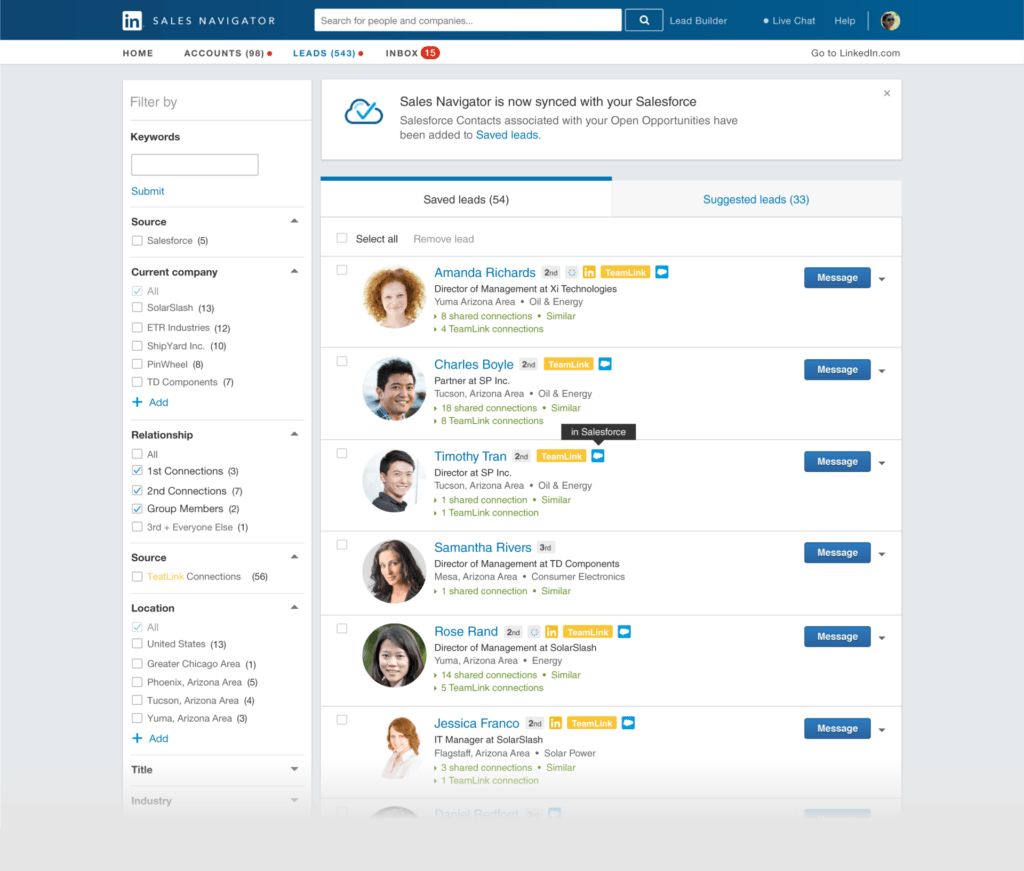Member Blog: Are You Practicing Your A, B, R’s? Yes, “R.”

by John Serrantino, co-founder and Chief Strategy Officer of EzHire Cannabis
Why it is critical to “Always Be Recruiting” in the cannabis industry and how to do it.
The cannabis industry is primed for unprecedented growth in the coming months. Today posting a job can yield thousands of candidates in a matter of hours. In the post we will discuss why this may not be the blessing it appears and how businesses can adapt to handle the influx of talent coming into the cannabis industry.
It seems like everyone wants to work in cannabis these days. With the retail industry experiencing damage that has accelerated its demise, a more diverse candidate set is flocking to cannabis as the industry continues to grow. At EzHire Cannabis, a talent engagement platform, we have identified three distinct buckets of candidates:
- Retail Refugees – these are candidates with extensive experience in a retail setting, including middle and upper management. This pool of candidates is short on cannabis experience but seasoned when it comes to creating a retail customer experience.
- Silicon Valley meets cannabis – when it comes to the evolving needs of cannabis, technical knowledge is at a premium. IT support is necessary as digital storefronts become vital. Digital marketing & communication, particularly to maintain business-to-business relationships, has become a priority over face-to-face interactions.
- Advancing from within – as new markets open the talent from more established markets is proving willing to relocate. Finding this type of talent isn’t easy but it can be critical when starting a cannabis operation in a new market where industry experience is near impossible to source locally.
Cannabis Talent is Building
The legal cannabis market currently employs nearly 300,000 people with exponential growth expected in the coming years. That means there are a lot of prospective candidates with real experience. Unfortunately, there are three core problems that hinder your hiring efforts:
- Those experienced professionals aren’t always actively looking for jobs
- Experienced candidates aren’t always located in your backyard
- Your competitors may be able to lure these candidates to their business before you
In the 1992 film Glengarry Glen Ross, Blake, an aggressive big city salesman played by Alec Baldwin, introduces a sales team to the “Always Be Closing” mentality to drive business. While this advice hasn’t really aged well for sales, when it comes to staffing your business, it is applicable. Best practice dictates the need to “Always Be Recruiting.” This practice, known more commonly as active recruiting, involves networking with those already in the industry to improve your reach and visibility to those prospective candidates.
Best Practices for Finding Talent

The most common methods of active recruiting involve:
- Attending industry networking events – virtual or otherwise these are a great way to get face time with a mix of industry professionals.
- Leveraging Technology – as the stigma around working in the industry fades, top talent has migrated to LinkedIn. A smart business owner or hiring manager will build a strong network via the platform.
- Monitor industry trends nationwide and share that knowledge – if you’ve built a strong social network, you’ll want to keep them educated. This helps engage the right people for your business.
Balancing Priorities While Getting Results
While it can feel like a lot of work to constantly be recruiting, the benefits far outweigh the time investment in the long run. Take for example the way an experienced hire, be it in retail or lab testing, is able to come in and “get stuff done” with limited onboarding and handholding. Most businesses find those candidates primarily need training on protocols and processes specific to the business rather than a full background in the industry which can be time-consuming and expensive.
Hiring Managers have consistently expressed feeling overwhelmed by the sheer amount of applicants they receive when they post for a position. They simply do not have time to sort through thousands of resumes to find the diamonds – and resumes often do not tell the full story, requiring a phone screen and in-person interviews to really get to know whether the applicant is a fit.
Fortunately, within the industry, there are a number of ways to streamline these motions. In fact, this post offers insight into some of the ways you can work toward securing top talent. Bringing on a new employee is an investment you are making in your business, taking the steps outlined above serves as a great way to make sure you are getting the highest probability of a return on that investment.
Happy Hiring!
 John Serrantino is the co-founder and Chief Strategy Officer of EzHire Cannabis. EzHire Cannabis offers technology forward solutions for business owners and hiring managers to enable their growth. Founded in 2017, originally as Fortuna Business Solutions, EzHire represents the first talent engagement platform for the cannabis industry. Prior to joining EzHire, John was an early-stage employee at multiple successful startups including as Director of Sales for Seattle-based CRM, PipelineDeals and Director of Client Services at Philadelphia-based remindermedia. John and his wife Sarah reside in the Tampa Bay area and are active in the animal rescue community.
John Serrantino is the co-founder and Chief Strategy Officer of EzHire Cannabis. EzHire Cannabis offers technology forward solutions for business owners and hiring managers to enable their growth. Founded in 2017, originally as Fortuna Business Solutions, EzHire represents the first talent engagement platform for the cannabis industry. Prior to joining EzHire, John was an early-stage employee at multiple successful startups including as Director of Sales for Seattle-based CRM, PipelineDeals and Director of Client Services at Philadelphia-based remindermedia. John and his wife Sarah reside in the Tampa Bay area and are active in the animal rescue community.
Member Blog: The Importance of a True Human Capital Management Leader

by Bryan Passman, Co-founder and CEO of Hunter + Esquire
Numerous cannabis organizations have taken advantage of the global health crisis to cut staff and combine positions. We saw the role of HR lead added (yet again!) to the job description of the CEO, CFO, or another officer. Unfortunately, we witnessed several companies perform these cuts and layoffs during the pandemic as a way of cleaning house. Without a strong HR foundation in place, many of these exits were messy and resulted in angry ex-employees and disgruntled employees who are preparing their resumes to manage their exits proactively. While this transition is always challenging, it doesn’t need to end with poor relationships with ex-employees. As we know, the world of cannabis is small, ensuring a good reputation is critical. As the overall and cannabis economy opens back up to our new normal, it is even more important than ever to ensure your organization has the vital piece of the puzzle in place.
The human resources profession in and out of cannabis has evolved in recent years, and with it, the role of the Chief Human Capital (or ‘Resources’) Officer has changed as well. It progressed from fighting for a seat at the table to playing a vital role in the executive team as a strategic partner to the CEO and CFO. The CEO, CFO, and Chief HC/HR Officer should be viewed as equally responsible for executing the business strategy, with distinct yet highly interdependent roles to play. In essence, the CEO defines &/or leads the vision/strategy; the Chief HC/HR Officer articulates and drives people’s DNA, while the CFO manages financial resources and investments. It takes people and financial resources to implement the business strategy, which is why the relationship between these leadership roles is so vital.
The role of the Chief HC/HR Officer is becoming increasingly complex. It is continuously changing due to a range of factors, including the evolution of technology, artificial intelligence, automation, the changing profile of the workforce, new ways of working, and the increased focus on talent, especially in the cannabis industry. The profile has shifted from a traditional HR professional, narrowly focused on his/her function to a well-rounded business leader who can contribute meaningfully in all areas of the business. Today’s HR Chief is a culture champion and change-agent who is commercially astute, analytical, and technologically savvy, who speaks truth to power and influences softly yet assertively.
Hiring and retaining the right talent.
Human Capital Management is essential for hiring, managing, training, and retaining talented and high performing employees. Employees are the most valuable resource in an organization. Individuals who spend the maximum part of their day contributing towards the success of an organization are its most crucial resource. Employees can either make or break an organization, truly making them an organization’s lifeline.
Making new employees feel comfortable/orienting them to the organization.
Human Capital management plays a vital role in orienting a new employee to the system. Boring and meaningless onboarding programs lead to confusion and eventual loss of employee interest. Most new hires develop very strong positive or negative vibes about their new employment within the first 24 hours in their new role; it’s a lot easier to enjoy the positive vibes from getting that first 24 hours right than dealing with the negative vibes from the start. Turnover can cost an organization 2.5 x the salary. Incorporating professional onboarding into your standard SOPs is critical for new hires who make a “stay” vs. go” decision within the first 24-48 hours in a new job. This includes not loading someone with unnecessary information on the very first day (s)he steps into the organization. Making him/her feel comfortable, which during a pandemic and isolation can be challenging. Click here for tips on creating a connection virtually. Such small initiatives go a long way!
Training employees
Employees need to stay current and continue to learn to prepare themselves for adverse conditions. Human Capital Management helps train employees and makes them a valuable resource for the organization. Employees who do not brush up on their skills from time to time find it difficult to survive in the long run. Human Capital Management helps develop the skills of employees, which creates a positive impact on the overall organization. Human Capital Management plays an essential role in increasing the knowledge, well-being, and efficiency of employees. Individuals are in a position to contribute more towards the system, eventually increasing the overall productivity of the organization. Take the steps now to add this essential team member to your roster.
A productive, thriving workforce is the most crucial component of a successful business. This requires viewing people as human assets, not costs to the organization. As with any other asset, a talented workforce can be used strategically to add value to an organization.
 Bryan Passman is a father, a husband, a trailblazer, and Co-founder and CEO of Hunter + Esquire. My professional background before launching H+E was entirely in retained executive search for 18 years in MedTech/Pharma (15 yrs) and Food and Adult Beverage CPG (3 yrs). My deep knowledge of those highly regulated and nuanced industries has helped H+E significantly understand the needs and wants of our cannabis clients. My deep and genuine networks within those industries have helped us deliver that rare talent “unicorn” our clients desire to fit their particular needs. My client-first approach helps us provide a very customized, white-glove, headhunter treatment to client and candidate.
Bryan Passman is a father, a husband, a trailblazer, and Co-founder and CEO of Hunter + Esquire. My professional background before launching H+E was entirely in retained executive search for 18 years in MedTech/Pharma (15 yrs) and Food and Adult Beverage CPG (3 yrs). My deep knowledge of those highly regulated and nuanced industries has helped H+E significantly understand the needs and wants of our cannabis clients. My deep and genuine networks within those industries have helped us deliver that rare talent “unicorn” our clients desire to fit their particular needs. My client-first approach helps us provide a very customized, white-glove, headhunter treatment to client and candidate.
Member Blog: Best Ways to Attract Top Talent to Your Cannabis Business

by Jacob Carlson, Co-Founder of Fortuna Business Solutions
The cannabis industry is growing rapidly. As more people look to cannabis for the health benefits it provides, the industry is on an upward trajectory and now is a great time to get in on the ground floor.
If you are starting or growing your cannabis business, the people you hire will be very important. Your staff will include customer service reps which will be the face of your business, people who work behind the scenes to make sure you are compliant and organized, a marketing team and those in the warehouse who are responsible for making sure your products arrive safely and securely.
While the market is growing, the industry is quite competitive and you need to do what you can to make sure your business stands out. Hiring the right people can give you that edge. With that in mind, this article will explore the best ways to attract talent to your cannabis business.
Seek the Help of a Specialized Search Firm
It’s important to remember that the best candidates might not be the ones looking for jobs. They are often people that are already in respected positions and, with an attractive enough package, you may be able to lure them in to start working for you.
Certain search firms will know exactly where to look for the talent you need. They will have a network of qualified people that they will sort through before using other tactics. This will ensure that they are picking from a pool of experienced candidates who will know what it takes to help your company grow.
When considering what type of search firms will be best, look into retained recruitment and executive recruitment firms. Retained recruiters are dedicated to finding the ideal candidate for your position and they won’t stop until their job is done.
Executive recruiters, on the other hand, are skilled in finding candidates for top-level positions. Consult them to find qualified people who will see to it that your company is running smoothly and reaching its goals.
Show Your Company in the Best Light Possible
If you are looking to find top tier candidates for your positions, you have to show your company in the best light possible. Remember, you will be picking from a pool of highly skilled candidates who may have their choice of positions to choose from. Therefore, not only will it be important for the candidate to make a favorable impression, it will be important to the company as well.
Companies can do this by offering comprehensive compensation packages including competitive pay, benefits, and perks. A great work environment will also be a bonus.
You also want to do all you can to impress the candidate in the interview process. During this process, be sure to not only ask the candidate questions about themselves but leave them plenty of room to ask you questions as well. Bringing in members of the staff to meet them will also make them feel as if you are showing a real interest in them and want to make them part of your team.
Establishing your brand is another thing you can do to make your company look impressive. Your brand should have a logo, a well-designed website, a strong online presence, a clear mission statement, and a strategic marketing strategy before even attempting to look for top tier talent. A lack of these qualities can make qualified candidates run the other way.
Accurate Job Descriptions
Whether you are going through a search firm or doing your own headhunting, having an accurate job description will be a real bonus. It may seem obvious, but leaving out valuable information like the basic duties of the job, the hours, the benefits and pay offered, the location and anything else that might be relevant can make candidates skip over your ad and move on to the next.
Be sure to add as many details as possible when creating your wanted ads.
Offer Smooth Onboarding
Once you have decided on a candidate you would like to hire, follow up with a smooth onboarding process.
It may be surprising to find out how easy it is to lose qualified candidates during the onboarding process due to lack of communication, lack of support of just general confusion. Make sure that you maintain plenty of contact with your employees while they are becoming integrated into your system. Provide helpful feedback and encourage them to share their feelings and opinions during this pivotal time.
If you are looking to make your cannabis business stand out by hiring a first-rate staff, the steps you take during the hiring process are very important. Team up with the right search firms, make sure you look impressive to the talent, provide accurate job descriptions and continue to support them throughout the onboarding process. Then you can look forward to having a team that will help your company grow.
 Jacob Carlson is the Co-Founder and CEO of Fortuna Business Solutions. Fortuna is proud to be one of the first east coast staffing agencies in the cannabis industry being based out of Portland, Maine. Jacob is a serial entrepreneur having previously co-founded a corporate event service (Just Enjoy!) and social media automation tool (RapidCrowd), and he is primed for scaling his next venture with his two co-founders, the Ellis brothers.
Jacob Carlson is the Co-Founder and CEO of Fortuna Business Solutions. Fortuna is proud to be one of the first east coast staffing agencies in the cannabis industry being based out of Portland, Maine. Jacob is a serial entrepreneur having previously co-founded a corporate event service (Just Enjoy!) and social media automation tool (RapidCrowd), and he is primed for scaling his next venture with his two co-founders, the Ellis brothers.
Hiring in the cannabis industry is hard, Fortuna Business Solutions makes it easy. We help businesses in the cannabis, CBD and hemp industry find quality candidates to hire on to their team. If you are tired of weeding through thousands of unqualified applicants or struggling to find someone with specific experience, we can help.
Committee Blog: The Employee Onboarding Process

by NCIA’s Human Resources Committee
Kara Bradford of Viridian Staffing, Kerry Arnold of Canndescent, Heidi Quan of Murchison & Cumming LLP, Nichole McIntyre of Urban-Gro, Michelle Whitmore of H2 Talent, and Mark Hackett of Emerge Law Group
You’ve found, interviewed, hired the right person for a position in your business, and they have just accepted your job offer. Congratulations! Now what? In the second part of our three-part series, the HR Committee shares insights on the Onboarding of employees. Onboarding new employees can be critical to ensuring happy and productive workers that understand the culture and expectations of your company. Having an organized procedure for bringing on a new hire is crucial for both the company and the new employee. Your company should be as prepared and ready as the new employee is expected to be for their first day. This can be a missed opportunity to make a great impression on your new employee.
In order to help your company with the onboarding process, a new hire checklist can be utilized to help ensure that you are covering all the necessary areas for a successful and smooth entry into your workforce. We have prepared two checklists for the onboard process. One is more administrative in nature while the other is designed to assist managers to help smoothly integrate and transition the new employee into your company. In some companies, a Manager may need to perform the tasks on both checklists if the company does not have an HR Manager.
HR Manager Checklist
Starting with the HR Manager Checklist, it’s best to make sure that you’ve received a signed offer letter and/or employment agreement prior to the start date being determined. Some companies also prefer not to set a start date until the background check process has completed. Once this is completed, there are a series of steps to take prior to the new employee starting. You may need to order hardware/software, cultivation tools/equipment, etc. On their first day, it’s a best practice to have the worker complete all paperwork, including any W-4 documentation/I-9, etc, prior to starting on the job. We’ve also included instructions for I-9 completion.
Data has shown that employees don’t leave companies, they often leave managers; so provide your managers with the resources they need in order to inspire more confidence in the new employee for their manager. If the Manager isn’t the individual filling out the paperwork with the employee, have the manager greet the employee as soon as necessary paperwork is completed. Having a manager focus their attention on a new employee as much as possible during that first day will help to solidify the new employee’s sense of belonging to the organization.
Employee Onboarding Checklist For Managers
The manager should take time to introduce the new employee to all co-workers and other organizational stakeholders they may interact with while helping to familiarize them with the facility. The manager should then spend time setting/reiterating expectations of what the position entails and conveying any goals/metrics that the employee is required to meet. Finally, the manager should spend time training the new employee and setting them up for success, or delegating this to the appropriate subject matter expert on the team to do this.
We often have companies tell us they are struggling to retain their employees. By providing an exceptional onboarding experience from the very first day, this will help the new employee to realize you value them and the talents they are bringing to your company, thus helping to feel welcomed and continue their contributions longer to your firm.
In our next HR Committee Blog Post, we’ll provide a checklist with recommendations on how to handle Terminations.
Download The Onboarding Checklists Here:
HR Manager Checklist
Employee Onboarding Checklist For Managers


 John Serrantino is the co-founder and Chief Strategy Officer of EzHire Cannabis. EzHire Cannabis offers technology forward solutions for business owners and hiring managers to enable their growth. Founded in 2017, originally as Fortuna Business Solutions, EzHire represents the first talent engagement platform for the cannabis industry. Prior to joining EzHire, John was an early-stage employee at multiple successful startups including as Director of Sales for Seattle-based CRM, PipelineDeals and Director of Client Services at Philadelphia-based remindermedia. John and his wife Sarah reside in the Tampa Bay area and are active in the animal rescue community.
John Serrantino is the co-founder and Chief Strategy Officer of EzHire Cannabis. EzHire Cannabis offers technology forward solutions for business owners and hiring managers to enable their growth. Founded in 2017, originally as Fortuna Business Solutions, EzHire represents the first talent engagement platform for the cannabis industry. Prior to joining EzHire, John was an early-stage employee at multiple successful startups including as Director of Sales for Seattle-based CRM, PipelineDeals and Director of Client Services at Philadelphia-based remindermedia. John and his wife Sarah reside in the Tampa Bay area and are active in the animal rescue community. 



 Jacob Carlson is the Co-Founder and CEO of
Jacob Carlson is the Co-Founder and CEO of 